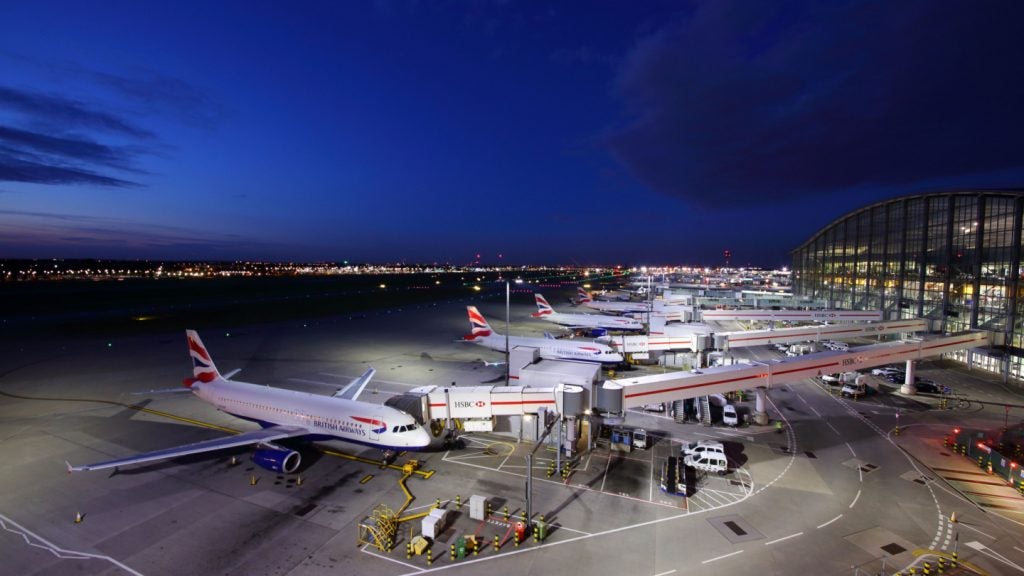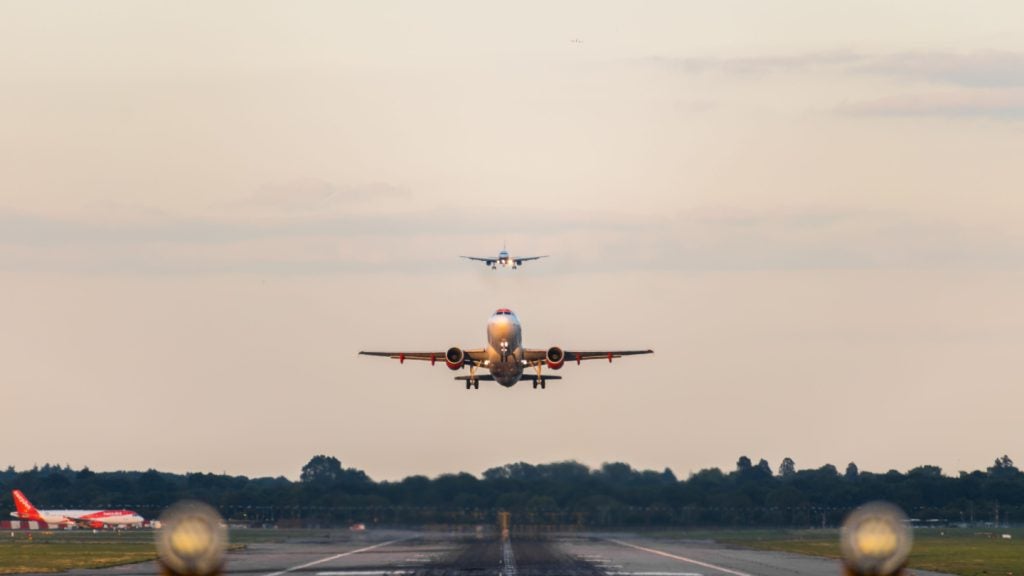
Aviation, probably more than any other form of transport, has seen a stormy development over the last 40 years. After a long period of steady, moderate growth, the ‘low-cost revolution’ following the deregulation of air transport towards the end of the last century suddenly brought about a rapid and universal growth, extending to all continents. But, as we find so often, this paradise was lost nearly as fast as we had found it. Exploding demand for fossil fuels leading to staggering price rises, the dawning of climate change and a massive international financial crisis are challenging the ability of this industry to survive in a very difficult environment.
To illustrate the seriousness of the situation, look at a testimony given by the US FAA administrator, Robert A Sturgell on the situation in the New York area:
“In an airspace that is already operating at, or even beyond, capacity, any disruption, be it weather or equipment difficulties, requires the FAA to institute measures that can often translate into delays. From 1 May to 31 August, 2007 alone, we saw a total of 210,443 delays totalling 9,808,347 minutes throughout the system. OPSNET data indicates that 72% of delays were caused by weather, while 14% were caused by volume, with the remaining delays due to other causes. Our aviation system is stretched to the limit.”
Closer cooperation between all service providers and intelligent solutions are needed to overcome this situation, and guarantee a ‘soft landing’ for all stakeholders.
What regulatory framework is in place to ensure that weather information is current, accurate and delivered to the people who need it? The International Civil Aviation Organisation (ICAO) and WMO, through its aeronautical meteorology programme, are coordinating the provision of weather and climate information services to all stakeholders. These two sister organisations, both part of the family of UN organisations, closely cooperate in their quest to keep flying safe, efficient and on time.
See Also:
While the provision of aviation weather services to air crews and operators is regulated in great detail and closely monitored by national and international audits, the provision of services to airports is, to some extent, left to individual service level agreements concluded between airport authorities and weather service providers. As recent investigations both in Europe and the US have shown, however, airport delays caused by weather-related events requiring ground de-icing are responsible for a significant portion of the overall delay. It becomes clear that highly efficient, accurate and focused information about current and expected weather conditions is as vital for airport operators as for airlines and ATM to ensure regular and efficient air traffic.
How well do you really know your competitors?
Access the most comprehensive Company Profiles on the market, powered by GlobalData. Save hours of research. Gain competitive edge.

Thank you!
Your download email will arrive shortly
Not ready to buy yet? Download a free sample
We are confident about the unique quality of our Company Profiles. However, we want you to make the most beneficial decision for your business, so we offer a free sample that you can download by submitting the below form
By GlobalDataSafety and liability at airports – the weather question
While ICAO and WMO are considering all aspects of safety for air crew and passengers while in the air, and during landing and take-off, the safety and well-being of the entire airport community, ranging from visitors and passengers to employees, also needs to be considered. While some aspects of weather-related ground hazards are well-covered by existing regulations for warnings, such as high winds, the risks of lightning strike or ground icing are left to individual safety regulations by the airport authorities.
Let us consider the most obvious risks to be covered:
Thunderstorms: lightning strike has always been a cause for concern for the safety of ground handling staff at airports, in particular for refuelling, baggage handling operations or security staff deployed around the airport premises. Many airports have developed policies to shut down ground handling when lightning strikes are close, typically about three miles from the airport.
Wind storms: violent gusts associated with severe convective events or extra-tropical and tropical storms affect not only aircraft, but also light vehicles, and baggage containers liable to become airborne prematurely when transported empty. Aircraft stairs, in particular the manually operated ones, can turn into dangerous objects when unsecured during unexpected gusts.
Ice and snow: clearing and de-icing operations need to cover enormous surfaces at larger airports. A comprehensive information system based on sensors may be needed to retain control of surface conditions along the many different movement and parking areas of a large airport.
All these problems of course raise the question of liability. As a ground rule, most legal systems require an authority that is in charge of complex operations on its premises to take every reasonable step to prevent accidents and incidents endangering the integrity of persons and property.
A safety management system coupled to a risk management system is thus typically the best solution to address all questions of safety at an airport, and needs to contain a credible system of detection and prediction of hazardous weather phenomena to be in place.
Information systems
The traditional way of informing all stakeholders in an airport environment was the provision of observations and warnings in a standardised form, using WMO codes or textual information in abbreviated plain language, through a series of information channels. This method, which requires permanent attention by providers and users of such information reduced the short lead time available in rapidly developing serious situations, such as convective gusts forming within minutes.
The need for faster and fail-safe information provision becomes apparent with airports reaching their capacity limits. The development of the US NextGen air transport system and the SESAR (Single European Sky ATM research) initiative are addressing this problem: instead of actively distributing short messages at regular time intervals to the different users including ATM, a pool of information is to be created with all relevant data being automatically updated by sensor-based systems at very high update rates, thus emulating the timescales of arrivals and departures.
Apart from convective storms, many other weather factors have a strong limiting influence on the arrival and departure capacity of airports. Based on existing technology and know-how, better presentation of information is already possible.
Winter weather
The cost of snow and ice removal from airport and aircraft surfaces is staggeringly high for many mid-and high-latitude airports, and failure to respond adequately and decisively to such situations may have dire consequences for the entire air traffic system of a region. Freezing rain, a nightmare for operations, is extremely difficult to cope with unless protective action has been taken before the onset of the event, and the time needed to apply affective protection by spraying liquid anti-freeze is a function of airport size and available equipment.
A recent estimate made by EUROCONTROL puts the percentage of weather-related events that are causing severe and widespread disruption at over 80%, and winter weather figures prominently among those.
Tropical and sub-tropical weather problems
Outside the latitudes typically affected by winter weather, massive disruption caused by weather events is not uncommon. Along the sub-tropical belts, sand and dust storms engulfing airports are currently being addressed by a WMO initiative trying to create a global framework for the prediction and warning of such violent events, with several centres around the globe providing information.
The risk of an airport being hit by a tropical cyclone, virtually paralysing operations, is being addressed by a pilot project in Asia, where probabilistic forecasts of cyclone hits are provided to aviation on a dedicated website.
Aviation and the environment
After a long and sometimes heated debate, aviation has now fully accepted the reality of climate change and is looking very closely at its share of this global problem. For airports, however, the environmental question is a much larger one, and includes local air quality and noise as well as the climate issue. Airports are being encroached by the population they serve, and air quality and noise conflicts are beginning to limit the development of their activities.
There are, however, indications that the close cooperation between aviation and meteorology may be able to help mitigating some of the unwanted side-effects of this economically important sector:
Forecasts of atmospheric conditions such as winds, inversions, and convection in the lower layers can help to determine when critical thresholds of local air quality may soon be reached.
Accurate forecasts of winds and temperatures along the different approach paths are used to reduce fuel burn at several airports.
Forecasts of snow, freezing precipitation and riming frost have become very reliable and help to minimise disruption as they allow the timely application of de-icing fluids, prepare the necessary vehicles and pre-heat the de-icing liquid.
Climate change will have a significant impact on both the demand for and the operations of civil aviation. National Meteorological Services are now preparing to provide not only seasonal, but also climate prediction services which would be essential information on investment and development decisions.
It is therefore obvious that, in the field of environmental protection and climate adaptation, meteorology will be a partner of aviation, helping to reduce and mitigate its impact on the environment, provide sound information for operational and long-term planning, and help to minimise cost in the harsher economic climate ahead.







